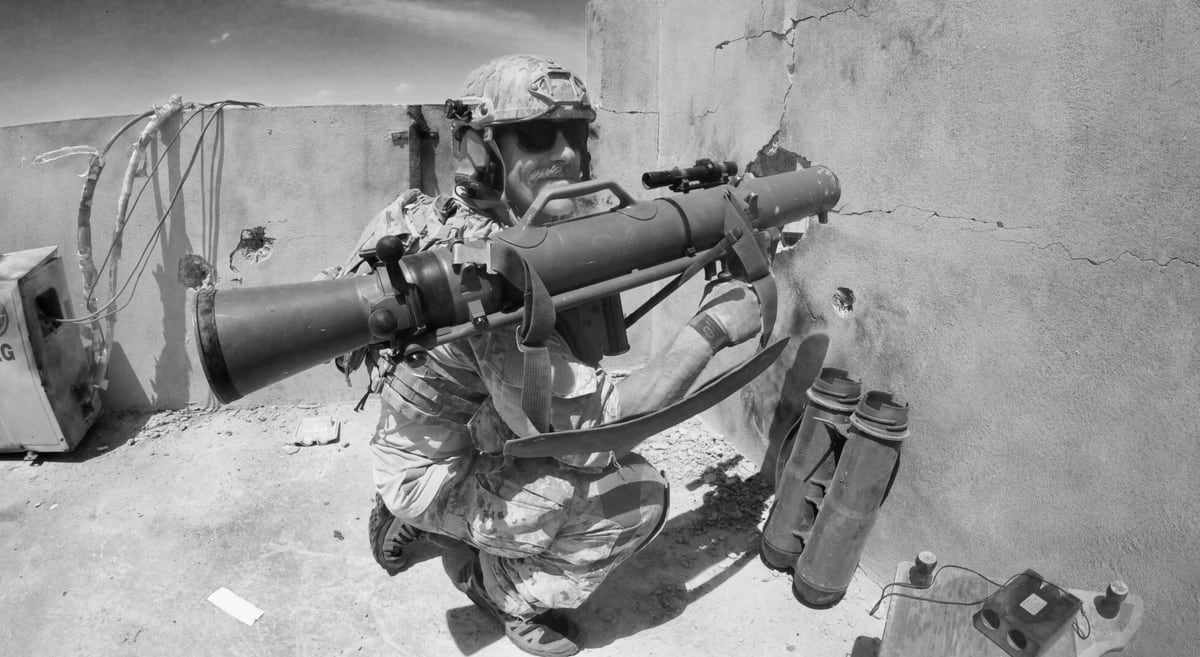On May 28, Special Warfare Operator Chief Edward “Eddie” Gallagher will be guided into a courtroom inside Naval Base San Diego, where he will face a panel of his peers sifting evidence in a war crimes case.
It will mark a sea change in the sea service’s clandestine and close-knit cadre of SEALs, a secretive and elite military force that rarely testifies against each other, especially in war crimes probes attracting an international audience.
But Gallagher faces a long line of SEALs prepared to provide damning testimony under oath against him.
One of the members of Gallagher’s unit — Alpha Platoon, SEAL Team 7 — is expected to testify that Gallagher confessed that he “killed four women,” according to Naval Criminal Investigative Service files and legal records provided to Navy Times.
Two other SEAL petty officers told investigators Gallagher bragged about slaying “10-20 people a day or 150-200 people on deployment,” court documents state.
And a fellow sniper intends to tell the panel that Gallagher claimed, “he averaged three kills a day over 80 days,” according to legal filings obtained by Navy Times.
Three other SEALs are slated to say their platoon chief took "random shots, sometimes into buildings, where he claimed to have killed someone,” similar filings allege.
One of the SEALs overhead the chief say he was “OK with shooting women” and another saw him “fire into a crowd of what appeared to be noncombatants multiple times," records state.
And still more SEALs say they’ll tell the panel that Gallagher attempted to cover up these alleged crimes by threatening to murder witnesses and embarking on a campaign to identify other whistleblowers, get them blacklisted in the special warfare community and ruin their careers.
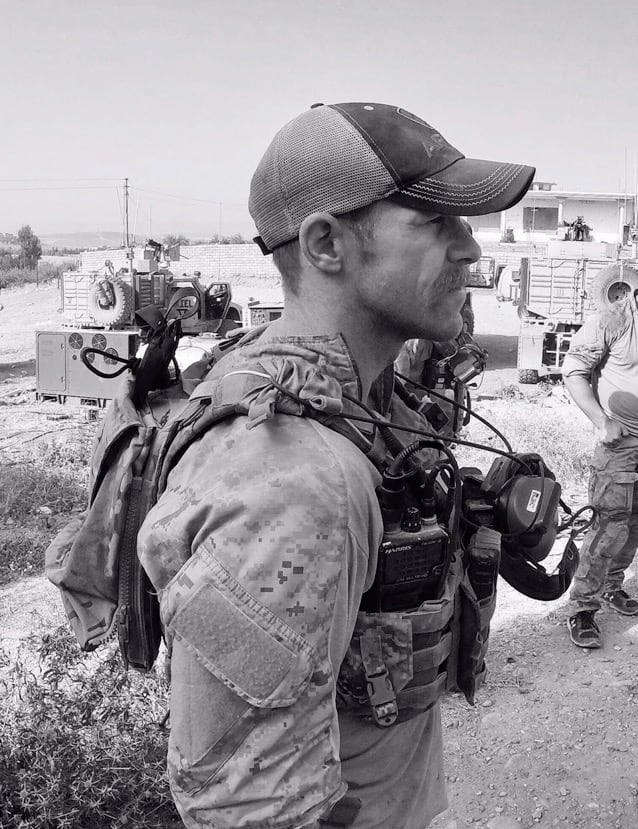
The most serious allegation against Gallagher, 39, is a premeditated murder charge in connection with the stabbing death of an unarmed and seriously wounded Islamic State fighter near the Iraqi city of Mosul in 2017.
But this isn’t going to be like the typical murder case.
Investigators found no bodies, so no autopsies were performed.
Photographic and video images reviewed by Navy Times seem fragmentary and inconclusive. Multiple pieces of GoPro footage are missing and prosecutors say they can’t locate them.
Text messages and other digital conversations involving Gallagher can appear damning at times, but they’ve been described by the chief’s supporters as dark humor, the talk of rough men who have experienced a great deal of combat, maybe the voice of an exasperated SEAL who believes he’s being railroaded by accusers and superiors.
Analysis of a knife confiscated from Gallagher will only say that it suggests traces of the cells of an Iraqi man, but it can’t be linked to any known victim, prosecutors concede.
So Gallagher’s trial ultimately will ask a panel of officers and senior enlisted sailors to weigh the credibility of witnesses — mostly junior SEALs — testifying about what they allegedly saw or heard, and then evaluate their possible motives for expressing their recollections that way.
Assuming that the witnesses even show up — at least three of them have threatened to assert their Fifth Amendment right against self-incrimination and refuse to testify, according to emails provided to Navy Times.
One of the SEALs is particularly prized by prosecutors because he allegedly was an eyewitness to the murder, but he’s prepared to go to the brig rather than testify in Gallagher’s trial, according to an email provided to Navy Times.
And others have declined to participate in the ongoing NCIS probe, including a Marine staff sergeant and a pair of Navy explosive ordnance disposal technicians attached to the platoon during the 2017 deployment.
But piecing together all the interviews in mid-2018 and a round of re-interviews in October of the SEALs reveals multiple, sometimes competing, reasons for bringing Gallagher’s alleged actions to the attention of his superiors and, later, law enforcement.
Some SEALs wanted to derail Gallagher’s advancement to senior chief.
Others were angry that he had been recommended for a post-tour combat valor award — the Silver Star — an honor they thought he didn’t deserve.
Others were concerned that he was tactically incompetent and temperamentally unfit to lead special operators. They wanted him fired from a schoolhouse billet that taught junior SEALs battlefield operations.
To Gallagher’s legal team, there’s a problem with these alleged motives.
At first, they say, the anti-Gallagher campaign by the alleged whistleblowers appeared to succeed. Gallagher’s SEAL Team 7 superiors in California junked the Silver Star application and he wasn’t going to make senior chief before his planned retirement after 20 years of service.
If many of the allegations of the witnesses were untrue or embellished to depose Gallagher, they still worked — until the claims hurdled SEAL Team 7 and reached Naval Special Warfare Group 1.
“And then, all of a sudden, they hit a nerve,” said Timothy Parlatore, Gallagher’s lead civilian counsel. “The problem is, once they get what they wanted, the process doesn’t stop. It escalates and Warpinski is now on the case."
Joseph Warpinski is the lead NCIS special agent assigned to the Gallagher probe.
“The train has left the station and now they can’t get off the rails. Now, they’re stuck," said Parlatore, who suspects some accusers lied to investigators.
It was the judge advocate general’s office at Group 1′s California HQ that summoned Warpinski’s agency, records reveal.
Although they had the NCIS hotline number for days, legal files indicate that not one of the SEAL witnesses called it.
Instead, NCIS contacted them.
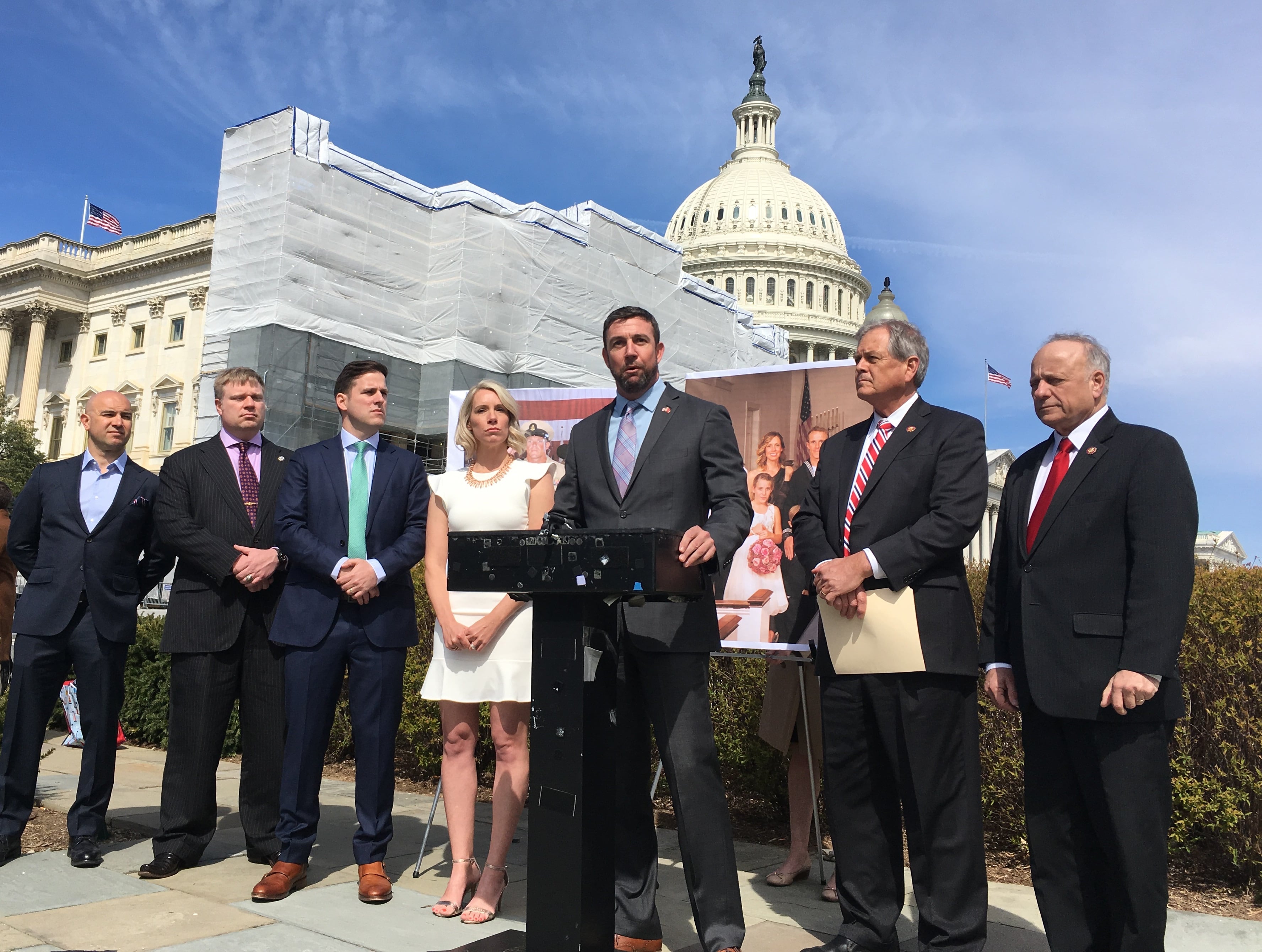
Because many of the SEALs who became witnesses against Gallagher are in operational units or expected to return to overseas work, officials asked Navy Times to withhold naming them, at least until they’re called as witnesses in a public trial.
One of the SEALs served as a sniper in Iraq and left the Navy when he returned to California. But officials insisted he received threats because he helped investigators and asked that his identity be protected for now, too.
Not all the SEALs’ statements are consistent about what they witnessed or even when the alleged incidents occurred.
There’s the fog of war, of course, but several statements display fundamental disagreements about what occurred on the battlefield and was rehashed during meetings with each other and their superiors back in California.
Legal filings and messages exchanged between defense attorneys and prosecutors provided to Navy Times show other SEALs who broke contact with NCIS after the initial round of interviews.
They appear to have cast doubt on whether Gallagher actually killed anyone during the entire deployment, lawfully or unlawfully.
By early 2019, however, the prosecution had settled on a narrative about what began going wrong in Iraq two years earlier, according to legal filings and internal correspondence provided to Navy Times.
It appears largely stitched together from interviews with 11 Alpha Platoon members — seven first class petty officers, two second class petty officers and a lieutenant — a group that comprises about half of the force on the deployment, including their attachments from other Navy units, the Air Force and Marine Corps.
But at the beginning of the probe, two interviews with SEALs still on active duty today seemed to propel the larger NCIS investigation.
The first NCIS interrogation kicked off on April 16, 2018, with a first class special warfare operator — an SO1.
He’s since been advanced to chief, the same grade as Gallagher.
He emerges in the reams of testimony as the most prominent SEAL pushing superiors to block his former platoon chief’s advancement and Silver Star and terminate him from his training assignment.
On April 10, 2018, his superiors had referred the case to federal agents as a “LOAC” — a Law of Armed Conflict Violation, or war crime.
During Alpha Platoon’s deployment, the SO1 had served as the lead petty officer, or LPO, and his initial statement to NCIS took the agent back to Badush — a village in the suburbs of Mosul — in early May of 2017, when the platoon was conducting an Advise, Assist and Accompany, or AAA, mission with Iraqi coalition forces members.
Military officials shorthand that as ICFM, according to an NCIS investigative action provided to Navy Times,
From other NCIS and Iraqi records provided to Navy Times, it can be pinpointed to May 3, 2017 — less than a month after Alpha Platoon began their tour — and the ICFM were members of the Iraqi Emergency Response Division, the Ministry of the Interior’s elite special forces unit.
The SEAL compound boasted a main headquarters building that overlooked the low ground below them and peered over an opposite hillside.
Because of ICFM gains, Islamic State fighters had been pushed back from their main positions and were retreating into the city.
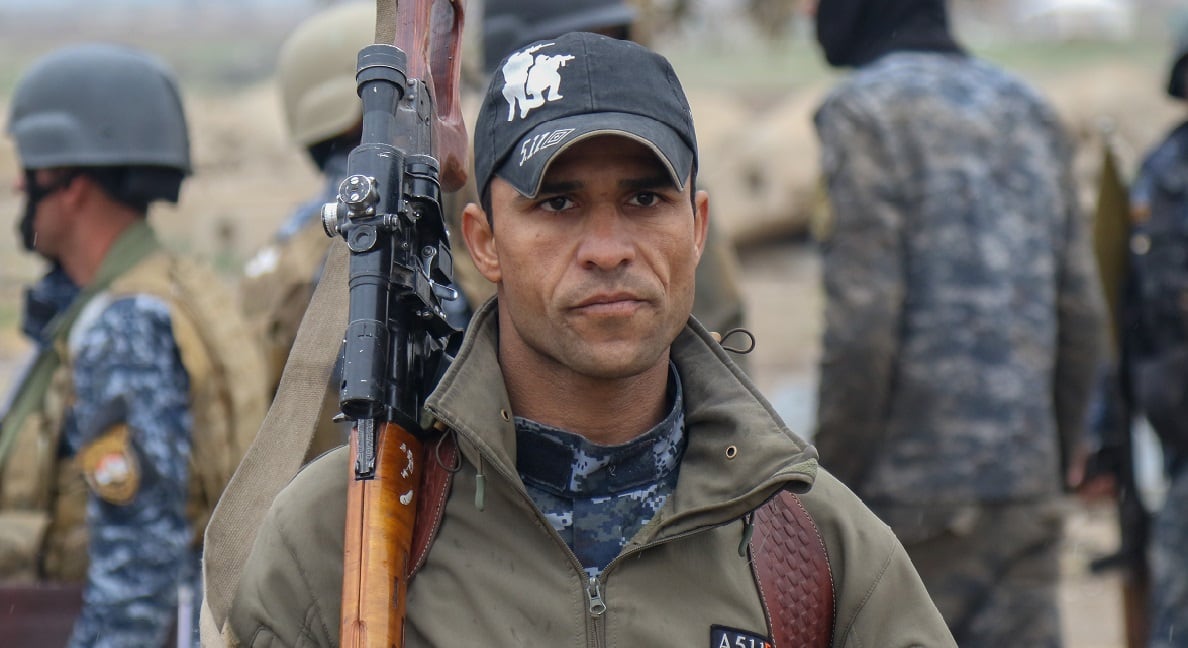
The SO1 told NCIS that he observed “a Humvee full of ICFM soldiers” enter the compound’s gate. They yanked an injured boy — the SEAL estimated he was 16 years old, but others thought him younger — off the hood, near where Gallagher was standing.
The SO1 “found it strange that (Gallagher) was present because (Gallagher) should have been closer to the fighting outside the compound with the forward element,” NCIS wrote.
It was Gallagher — a Navy corpsman assigned to Marines before he became a SEAL — who began treating the wounded Iraqi, which the SO1 assumed was a shrapnel wound.
The SEAL didn’t think Gallagher was working on a severely wounded detainee, but the platoon chief was soon assisted by another SO1.
He told NCIS that he watched Gallagher and the other SO1 for a few minutes but then returned to his duties as the LPO. He recalled “no injuries to his neck” and that the prisoner was unarmed, “conscious and not combative."
Later, another SO1 who was trained in battlefield medicine told NCIS that he remembered watching the other SEAL corpsman treating the detainee, who appeared to have suffered a leg injury and struggled to breathe, possibly from “blast lung,” a condition that often affects those who survive explosions.
He watched as the SO1 inserted a chest tube while Gallagher, using a special kit, performed a cricothyroidotomy — or “cric" — a simple and rapid surgical method for opening up a blocked airway by inserting a tube through an incision in the cricothyroid ligament, according to records provided to Navy Times.
Gallagher also was present when the prisoner received a trachea tube, two chest tubes and a Sternal Intraosseous Infusion, which bores through bone to reach veins when other IVs won’t work, records indicate.
That SO1 told NCIS he left as the other two SEALs continued working on the prisoner, although other interviews and the prosecution’s own legal filings in the case portray a chaotic scene, with memories about the incident often jumbled by all the witnesses.
In his statements to NCIS, the LPO said he later returned to the area, rounded a parked Humvee and spotted Gallagher kneeling on the right side of the wounded teen.
He insisted that he then saw the chief “stab the ISIS fighter multiple times in the right side of the neck” in a manner that “was in no way a medical procedure,” according to an NCIS report.
He described Gallagher’s knife as the same weapon the chief always carried in a leather sheath. He told NCIS it had a blade a few inches long, although photographs of the weapon make it look stubbier.
The LPO told the agent that an SO1 who remained to assist Gallagher with the medical care was “freaking out a little bit over what Eddie just did” but there was nothing anyone could do “because the subject was dead.”
That’s something the other medically-trained SO1 also told investigators; He returned to the area and was surprised to find the prisoner dead.
Filling in that gap of time, an SO1 who had been with the detainee later told NCIS that the wounded fighter also received a chest tube. He added that he was only about a foot away from the prisoner when Gallagher pulled out his knife and stabbed the boy two or three times in the neck.
NCIS reported that a second class petty officer also saw Gallagher stab the prisoner, but later internal messages shared between defense attorneys and Navy officials appear to indicate that he thought the chief sank his knife into the detainee’s torso — and the boy already had died.
So he stabbed a corpse.
In a Jan. 11 motion filed by Gallagher’s defense team, attorneys indicated that the Marine who has declined to assist NCIS saw the detainee but detected “no stabbings around the neck or chest” and said the prisoner had stopped breathing before dying.
Two high-ranking Iraqi members of the Ministry of the Interior’s forces, Maj. Gen. Abbas al-Jubouri and Col. Omar Issa Khadim, told NCIS that the detainee was barely alive when they brought him to the SEAL’s compound and passed away from gunshot wounds, not a stabbing.
What’s unusual about the interview is that it appears at times almost as if the LPO believes he’s attending an intelligence debriefing, not necessarily the sort of interrogation conducted by federal detectives building a criminal case against his former platoon chief.
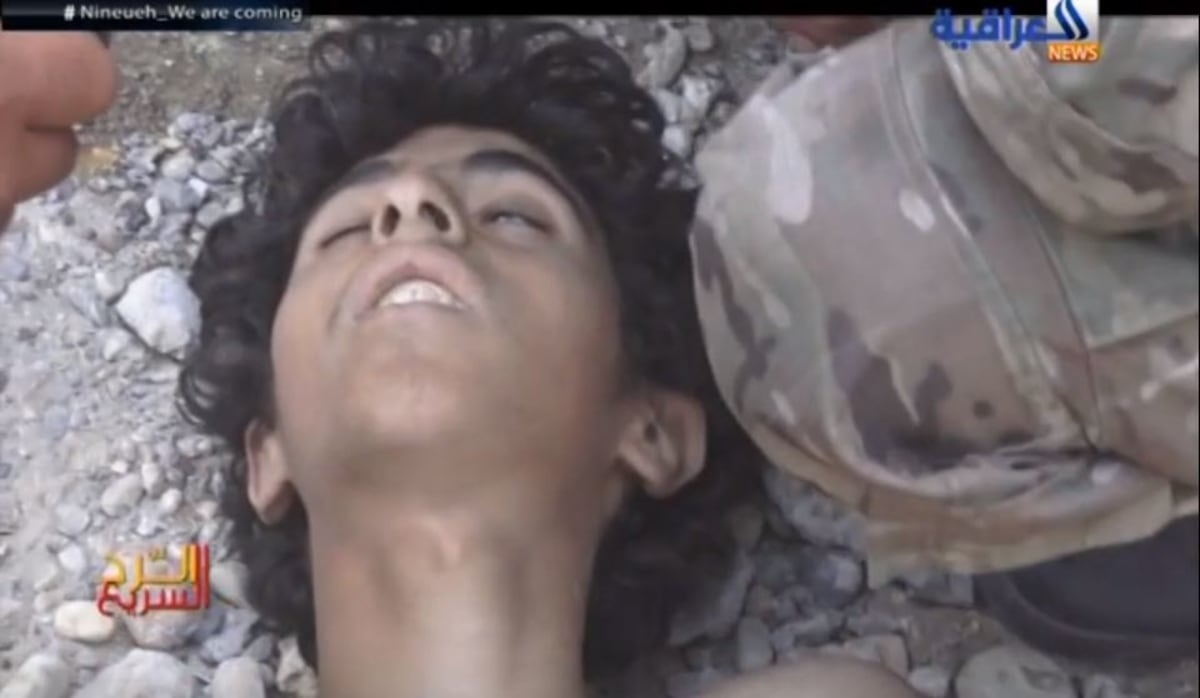
The lead petty officer told NCIS that he went and found the officer in charge of the platoon, Lt. Jacob X. “Jake” Portier, and told him “they needed to get out of the area."
When he returned from packing his gear, however, the LPO told NCIS he found Portier conducting a hasty re-enlistment ceremony for Gallagher “next to the body of the dead ISIS fighter,” according to the report.
He told NCIS that he remembered “listening to the ceremony and believing it was the most disgraceful thing he had ever seen," but it just got worse. Portier, he said, “gathered all of the team members together and took a photograph of the team."
The LPO said during his interview that he confronted Gallagher and told him “the guys are not good with what happened today.” Gallagher asked, “who had a problem,” and the LPO said that, “he personally had a problem with it,” according to the report.
The LPO got the impression that Gallagher “had no intention of avoiding committing the same acts again” and told NCIS the chief said, “They do a lot worse to us.”
The LPO told NCIS that he informed both Portier and his assistant officer in charge of the platoon about the alleged murder.
Later that night, the LPO gathered the platoon’s enlisted SEALs together and told them “that morally they could not let these actions continue,” so if Iraqi security forces brought more prisoners to them they should send them away so Gallagher “could not injure anyone else,” according to the NCIS report.
“The plan for the platoon was to have a perimeter around (Gallagher) to prevent this from happening again,” he said.
On June 17, 2017, the LPO rotated home on leave to witness the birth of his child but when he returned to Iraq he “began hearing rumors about (Gallagher) killing civilians on the battlefield,” according to the report.
One of those incidents allegedly occurred on the day after he left.
The sniper who’s now a civilian claimed he saw Gallagher “shoot an elderly man in his 70s or 80s on Father’s Day, 18 June 2017,” a shooting backed up by a first class petty officer now assigned to Naval Special Warfare Development Group — often called DEVGRU or SEAL Team 6, according to NCIS records.
Both are expected to testify that “it was clear the man was a noncombatant and they made the decision not to shoot,” according to a filing provided to defense attorneys.
Another SEAL told investigators that he saw Gallagher “shoot the elderly man in the back and watched him drop to the ground and saw blood on his back,” but it’s unclear if he’ll testify.
Another sniper who also has indicated he might not testify later told prosecutors that he saw an old man go down, but he didn’t see Gallagher shoot him, according to emails to prosecutors provided to Navy Times.
The LPO told NCIS that Gallagher later approached him and said he’d “killed four women today," alleged war crimes the SO1 said he repeated to Portier and another lieutenant.
The LPO indicated the platoon’s snipers then began “shooting warning shots so that the civilians would run away and (Gallagher) would not kill them," according to the report.
The LPO told the investigator that there were other war crimes fellow SEALs witnessed, but he didn’t see them.
He referred NCIS to an SO1 who served as a sniper during the deployment.
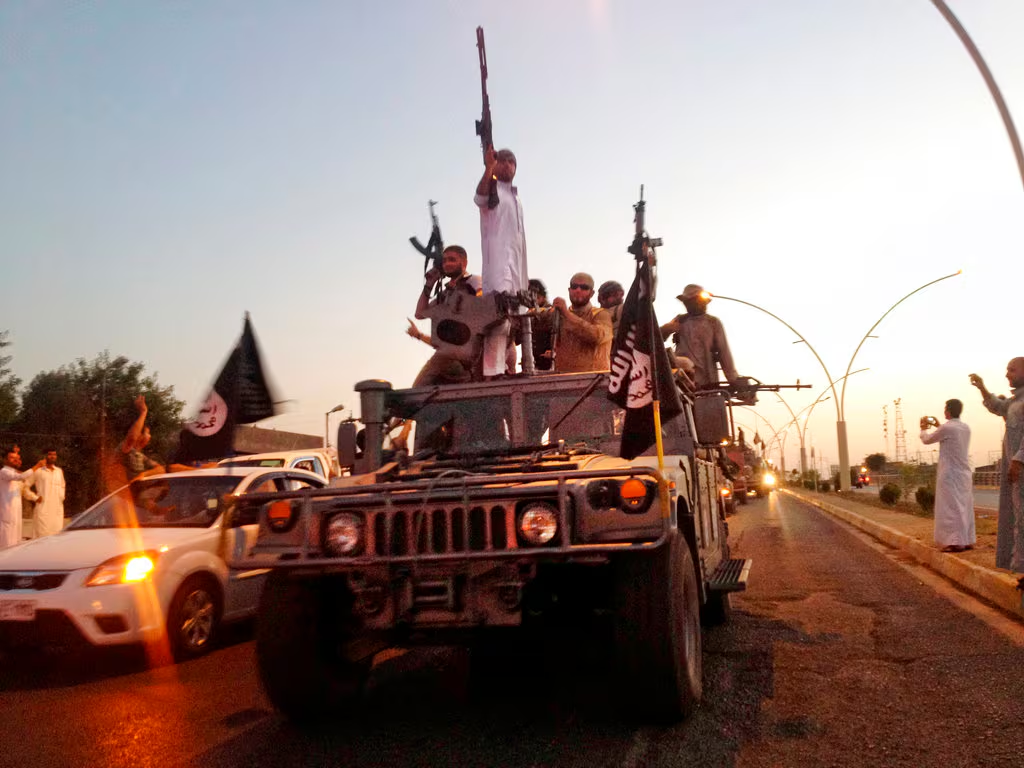
That SO1 was interviewed by NCIS Special Agent Seth Goodwin shortly after the LPO gave his statement. He was re-interviewed about five months later on Oct. 12 by Warpinski, the lead agent working the case.
In that second session, the SO1 sniper recalled being inserted into a position near Mosul around 3 a.m. — the southern of two towers — but didn’t give an exact date.
Investigators later placed the alleged incident in July, without specifying the date.
The SO1 told Warpinski that five or six hours later he watched people emerging from nearby buildings and, maybe, fellow snipers engaging a few Islamic State fighters near there.
Around noon, the SO1 said he panned north along the banks of the Tigris River, watching a path used by refugee families to escape Islamic State-controlled Mosul.
He told Warpinski he saw four girls walking along it, toward the river, away from ISIS territory.
“Almost immediately after seeing the group, one of the girls in a grey dress grabbed her stomach and fell to the ground after she was shot,” the SO1 said. “Two of the other girls ran away and over a berm out of sight. The fourth girl, who was wearing a blue dress, helped the girl in the grey dress to her feet and helped get her over the berm.”
Other records provided to Navy Times show that the SO1 remembered that the girls’ faces were uncovered and the one who was shot also wore a flower-print hijab.
The other SEAL sniper who’s now a civilian told investigators that he estimated the girl “to be a 12-year-old,” according to another document provided to Navy Times.
He also told NCIS that Gallagher had shot at but missed another young girl in a previous incident.
Other Alpha Platoon members told investigators that Gallagher bragged about killing girls, but prosecutors conceded it wasn’t “clear whether those statements — if they were made at all — reference either or both of these incidents.”
Nearly 50 minutes into his videotaped interview with NCIS, the SO1 sniper conceded that the SEALs had received “intel reports” that women were supplying weapons, water and food to Islamic State fighters, but he insisted he saw nothing like that through his scope.
Instead, he remembered the other girls “looking in the direction of the SEALs right after the girl was shot.”
And he told Warpinski he wasn’t alone in the southern tower ― Lt. Portier, a staff sergeant from Marine Forces Special Operations Command and an SO1 from DEVGRU — were with him.
The SO1 sniper said that the northern tower was occupied by Gallagher and two second class petty officers from SEAL Team 7.
That’s because Gallagher — who disliked using a spotter — “tried to keep away from Portier while they were in the sniper positions because (Gallagher) complained that Portier was too controlling and talked too much,” according to the report.
The SO1 told Warpinski that at first, he thought Islamic State fighters were shooting civilians. But he said Portier wanted to hold off reporting the incident until he determined Iraqi security forces hadn’t shot the girl.
Initially, it seemed that no one in the SO1′s tower thought Gallagher had shot the girl. It was only later, the SO1 said, that he learned his platoon chief took the shot, but it remains unclear why he came to believe it was Gallagher.
What seems clear is that the SO1 already had grown to fear his chief.
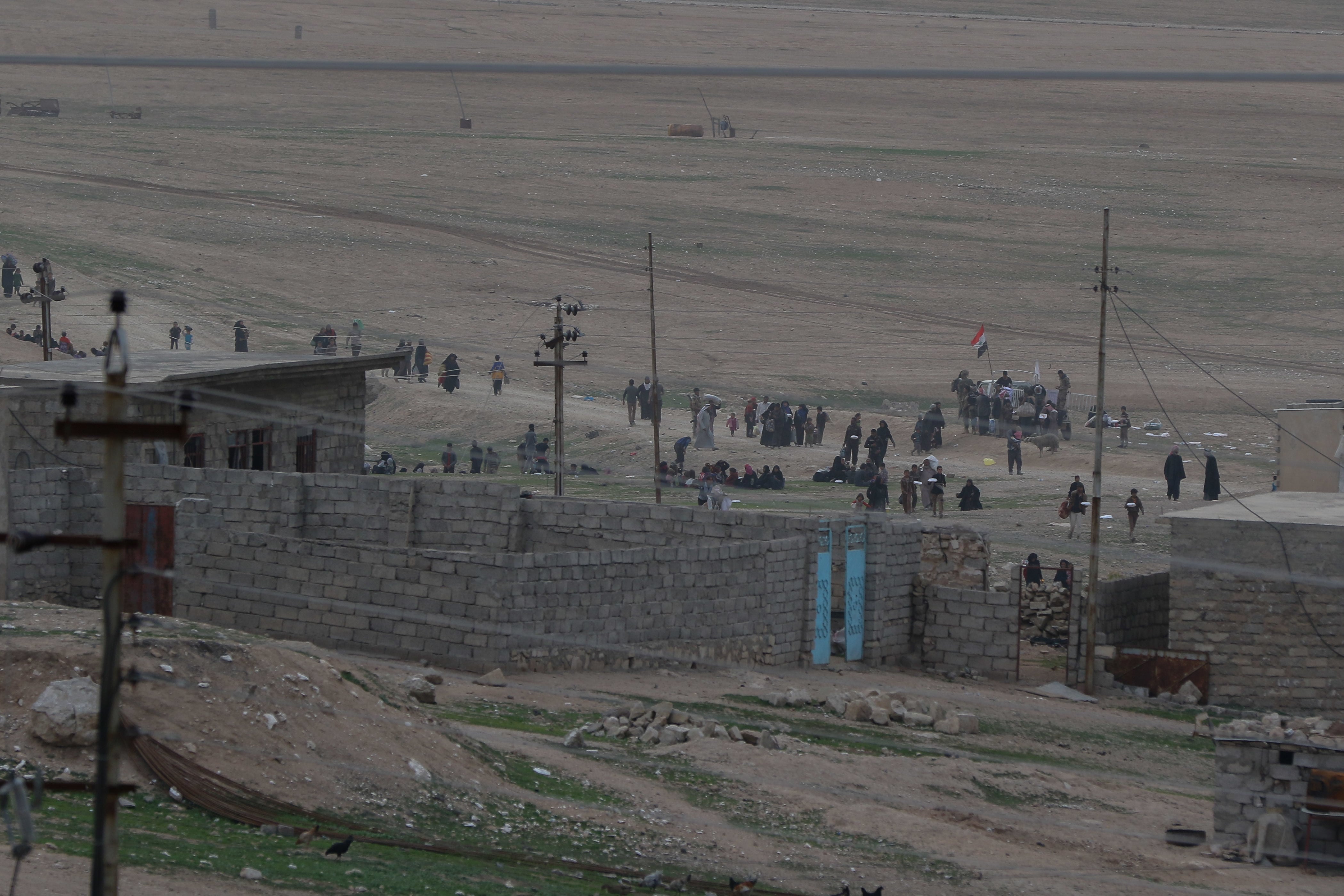
The SO1 sniper told Warpinski that on the day Gallagher allegedly murdered the prisoner of war, he had returned to the compound and found him speaking to an SO2 at a computer the platoon used to store photos and videos.
They were looking at an image of what appeared to be a male detainee and Gallagher said, “He was on the ground and I just started stabbing him. I lifted his head, I looked into his eyes and I stabbed him again,” according to the NCIS report.
To the SO1, it was a sign that Gallagher was putting his beliefs into action. He remembered attending Bible study at the home of the chief and his wife, Andrea, who led the class.
The SO1 told Warpinski that Chief Gallagher “knew a considerable amount of Bible scripture but does not practice it,” instead using religion “as an excuse for his actions.”
At one unspecified date, Gallagher announced, “We need to cleanse Muslims like the Old Testament," according to the SO1′s interview with NCIS.
To Gallagher’s attorney Parlatore, the SO1′s interview is the classic example of a witness who’s trying to connect dots for investigators by grasping on to events and conversations that likely aren’t related but end up unfairly portraying the platoon chief as someone he’s not.
“He wants to help NCIS agents get Eddie,” said Parlatore. “So he begins to see things the way they’d want to see them.”
The SO1 told Warpinski that by mid-August of 2018 Portier had become angry at Gallagher for allegedly mischaracterizing incidents that occurred during the deployment, including how Islamic State fighters ended up shooting both an interpreter assigned to the SEALs and an explosive ordnance technician.
By that time, government records indicate that Alpha Platoon already was embroiled in another probe into war crimes allegations.
This one involved what’s called a “switchblade drone” that was operated by the platoon on Aug. 1 that killed civilians in Tal Afar, according to legal filings.
Small enough to be transported in a backpack, the quiet, hovering UAVs can unleash tiny, but potent, missiles to blow up enemies, miles away from where operators are remotely piloting the drones.
According to an April 20, 2018, NCIS interview with Lt. Cmdr. Robert Breisch — the commander of SEAL Team 7 during the 2017 deployment — members of Gallagher’s platoon were interviewed by investigators about the drone strike, but it’s unclear why the SEALs didn’t tell them about Gallagher’s alleged war crimes then.
Neither Breisch nor his attorney returned messages from Navy Times and Navy officials declined comment.
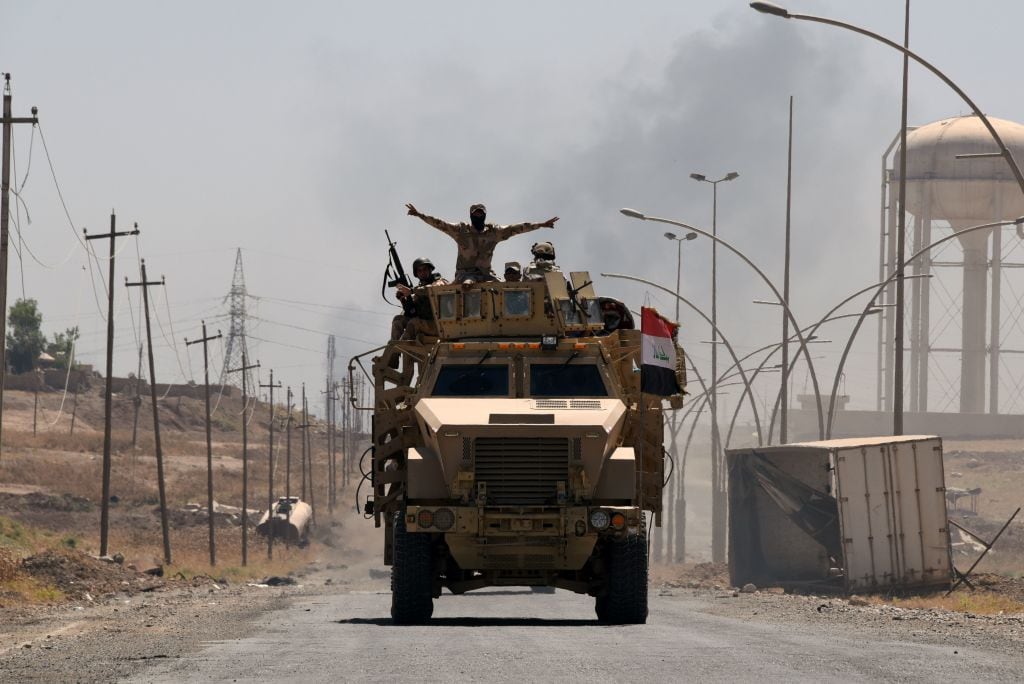
After the platoon rotated home to Naval Base Coronado on Sept. 1, 2017, Gallagher called a meeting in their high bay to confront his fellow SEALs about any problems they had with him, according to several NCIS reports.
The SO1 sniper said that Gallagher just wanted to hash out petty theft allegations tied to the disappearance of snacks on deployment, but he was soon confronted about tactical decisions he made in Iraq, including “using the platoon as bait” to draw Islamic State fire.
Gallagher snapped, “That’s tactics and we’re not here to talk about tactics,” the SO1 said.
Concerns about Gallagher’s tactical judgment during the 2017 deployment pepper the NCIS files provided to Navy Times.
Multiple witnesses are expected to testify that “they were far less effective in combat because their focus shifted from fighting ISIS to protecting civilians” and they lost faith in Gallagher as a platoon chief “because he was firing indiscriminately at civilians," a file states.
One of the SEALs, a second class petty officer, told investigators that Gallagher failed to “exercise the discipline to let tactical situations develop," according to one of the legal filings obtained by Navy Times.
As for using them as “bait,” different SEALs appeared to have different ideas about what the concept meant.
To some, it apparently reflected the chief’s drive to have them patrol and conduct raids during the day, much as infantrymen did during the height of the fighting in Iraq.
Army and Marine grunts braved small arms fire and improvised explosive devices to draw out insurgents and overwhelm them with superior firepower, which explained their high rate of casualties in Iraq and Afghanistan.
But some SEALs thought these tactics disregarded their specialty — conducting nighttime raids designed to surprise enemies when they were less likely to fight back.
That’s the line of thinking seized by Gallagher’s attorney, Parlatore.
He told Navy Times that Gallagher appeared to have drawn from a deeper understanding of tactics than his junior SEALs possessed and was channeling lessons learned in Iraq a decade earlier.
“Coming out during the day can draw out the enemy, who can be overwhelmed with firepower,” said Parlatore, a former Navy surface warfare officer. “That had a significant impact on the battlefield."
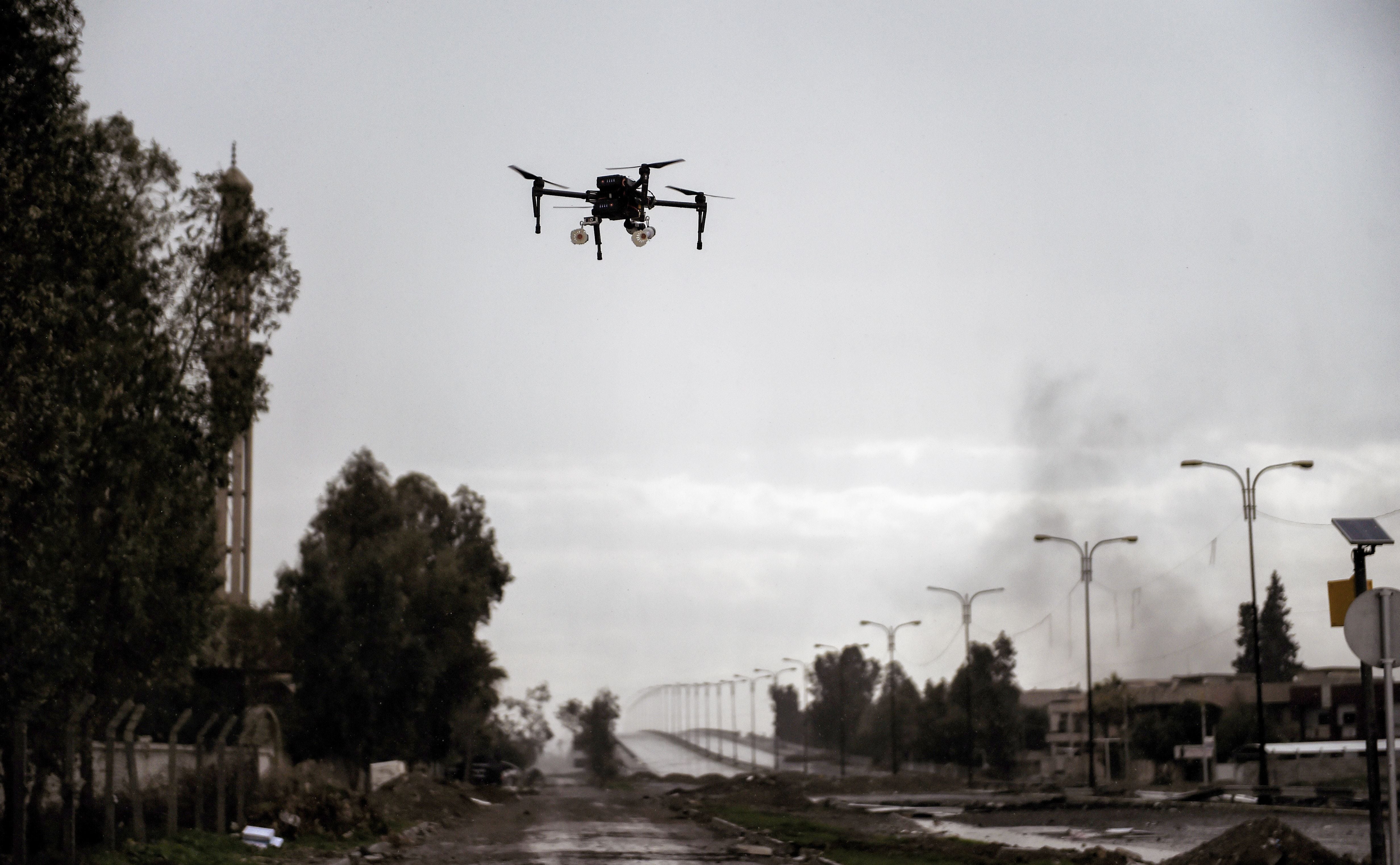
Others closer to planning operations inside the platoon expressed deeper concerns about Gallagher’s tactical competence and what “bait” really meant.
A proffer request from one of the two assistant officers in charge of the platoon indicates he’s prepared to tell prosecutors that Gallagher called in “false target coordinates to engage a mosque," tried to push his platoon into pointless and potentially catastrophic firefights with insurgents and became so mentally unstable that he should’ve been relieved from duty, but wasn’t.
At one point, Gallagher told the AOIC that Alpha Platoon needed to find Islamic State fighters and get in “one good TIC” (Troops in Contact, the direct and violent engagement with an enemy), “one where you need to focus on your field of fire or else you could take (a bullet) to the side of the head,” according to the letter provided to Navy Times.
The AOIC told Gallagher this sort of training by fire “was extremely unnecessary” but Gallagher shot back that his junior SEALs were “all a bunch of pussies" and needed the experience, the document states
The lieutenant said he became so alarmed by Gallagher’s tactical acumen that he began examining the plans for every proposed mission “in order to mitigate the risks, and tried to go out on every operation he could to make sure that the lives of his teammates weren’t being unnecessarily jeopardized.”
The AOIC told prosecutors that one proposed raid was so poorly conceived by Gallagher that it lacked a tactical goal the platoon could achieve, except inexplicably shooting people who might or might not be under a bridge.
Once the SEALs reached the other side of the river, there didn’t appear to be any options if they got pinned down by insurgent gunfire, the AOIC added.
To the lieutenant, Gallagher was "putting their platoon in an extremely vulnerable position for a mission that was not even authorized,” an argument that ended both his conversation with the chief and the proposed raid, according to the letter provided to Navy Times.
To Parlatore, the concerns expressed by the AOIC and other SEALs less experienced in combat than Gallagher really boiled down to disputes over how special operators should adapt to the 21st century urban battlefield.
“I think part of this comes out of a misunderstanding about the mission,” he told Navy Times. "The platoon wasn’t doing what SEALs like to do. There were differences of opinion about how they should conduct operations. But justified or not, what’s clear to everyone is that they didn’t like the mission.
“They’re like thoroughbred stallions. They want to do what SEALs do, things like raids where they can rehearse the operation to perfection. But that’s not what they were being asked to do in Iraq and they were blaming their frustrations on Eddie.”
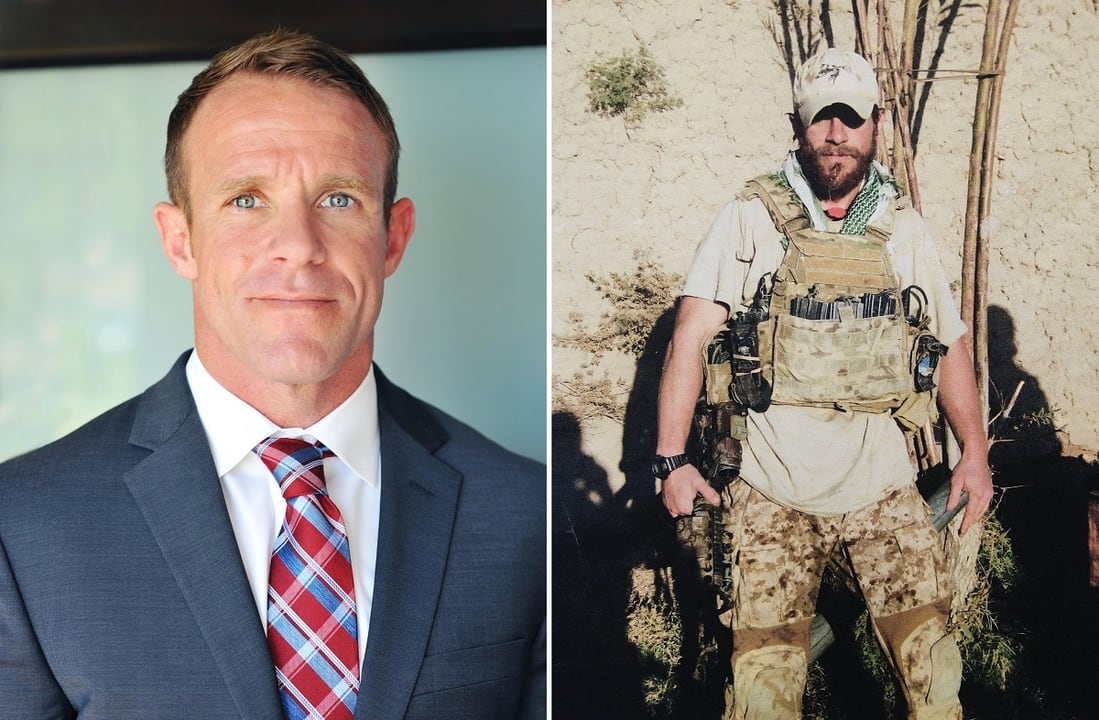
The showdown inside Naval Base Coronado with Gallagher didn’t appear to mollify his critics within the platoon and he still held his billet teaching tactics.
Both defense attorneys and prosecutors agree that Gallagher’s relationship with his former platoon was growing increasingly acrimonious.
The SO1 sniper told NCIS that one of the SEAL SO1s who assisted Gallagher with the wounded detainee said the chief had begun threatening “to kill mother(expletives)” who accused him of wrongdoing.
Gallagher allegedly told two lieutenants and another chief that he had dirt “on all of them” and “would bring them all down” if they reported his war crimes, prosecutors wrote.
As more witnesses began reciting their allegations against the chief, prosecutors contend that Gallagher circulated their identities to others in the SEAL community “and encouraged them to disclose the names and blacklist them.”
That included Gallagher telling another platoon chief that “the rest of the platoon were afraid to go out on patrol during the deployment and they were all cowards,” according to the NCIS report about the SO1 sniper’s interview.
Three months ago, prosecutors argued that Gallagher “spread numerous rumors about his teammates to members of the SEAL community, describing them as cowards who were afraid to go out on missions during deployment and went so far as to tell the new chain of command for teammates who had transferred,” according to a filing provided to Navy Times.
But to Gallagher’s attorney Parlatore, that’s where NCIS and the prosecutors started getting it wrong.
“They say it’s ‘obstruction of justice’ or ‘intimidating witnesses,’ but it’s really just telling the truth and telling the truth isn’t obstructing justice,” he said.
“Truth is our best defense and we think that once everyone hears what really happened, Eddie will be exonerated.”
A telling text seems to suggest that one of the SEAL witnesses at one point tried to get others in the platoon together to make sure their stories jibed with what they’d tell investigators, according to evidence files provided to Navy Times.
On May 28, a panel of Gallagher’s peers will start determining what’s true about the allegations.
If the prosecution is right, the chief likely will spend the rest of his life behind bars.
If Gallagher’s defense team is right, he’ll walk out of Naval Base San Diego a free man.
